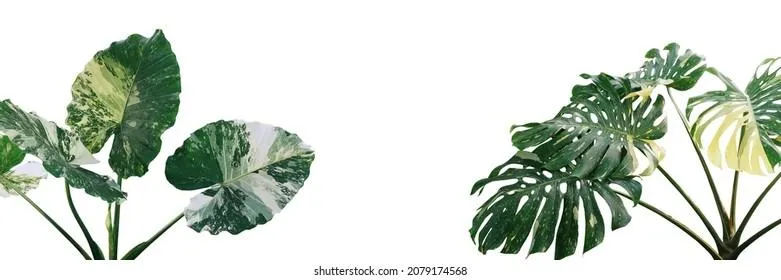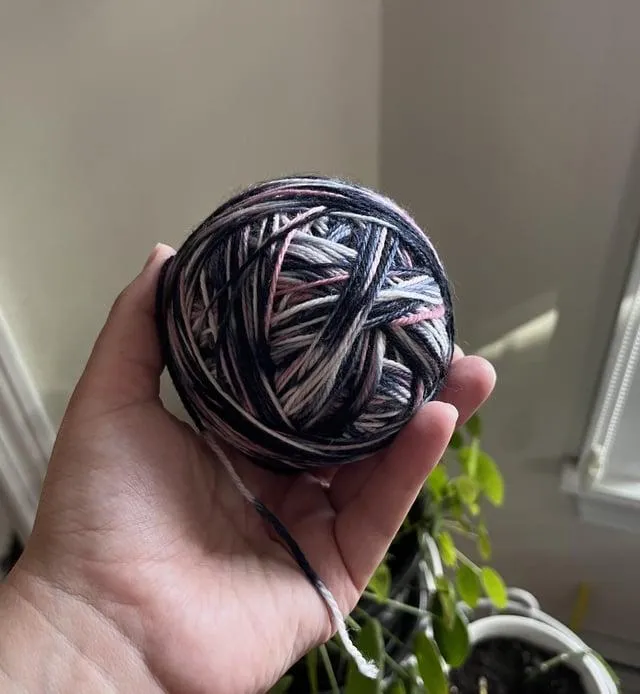An Insider’s Guide to Variegated Plants
Have you ever admired the colorful leaves of variegated plants and wondered how they get their unique patterns? As an avid gardener who’s grown my fair share of variegated beauties, I thought I’d share what I’ve learned about how these plants are created.
Understanding Variegation
- Variegation occurs when plant cells fail to produce chlorophyll, the pigment that makes leaves green. Without chlorophyll, leaves develop white, yellow or pale green patches instead of their usual solid green color.
- This lack of chlorophyll is caused by a genetic mutation that blocks or inhibits the production of chlorophyll in certain leaf cells. These mutated cells grow in streaks or blotches rather than being distributed evenly.
- The variegated pattern is stable and will be passed down if the plant is propagated from cuttings or by seed. New growth will generally match the pattern of the parent plant.
So in essence, variegation boils down to a quirky genetic glitch that leaves splotchy color patterns rather than uniform green. But how does one go about purposely creating variegated plants? Here are the main methods growers use:
Propagating Variegated Sports
Sometimes a genetic mutation naturally occurs in a non-variegated plant, producing odd-colored new growth called a “sport.” Propagating from these sports is basically like breeding – cuttings are taken to multiply the new variegated trait. I scored a variegated ficus this way from a standard green one in my neighborhood!
Cross-breeding
Plant breeders cross-pollinate variegated cultivars with solid-colored ones to transfer desirable traits between the parents. Kind of like getting the best of both worlds, yo? Through successive generations, they select offspring displaying stronger, more colorful variegation patterns for future breeding.
Inducing Mutations with Chemicals
Crazy as it sounds, mutagens like radiation or certain chemicals can cause intentional mutations. Growing plants from irradiated seeds ups the chances of funky variegation emerging. You better believe I’d peep those glow-in-the-dark leaves, my dudes! Of course, this method gets a bit wacky ethically.

Tissue Culture Techniques
Plant tissue cultured in a lab offers more controlled mutation induction. Dissected meristem plantlets raised in mutagen-spiked media sometimes arise variegated. Then they’re propagated repeatedly to stabilize desirable traits. Sounds complicated but very sci-fi cool, if you ask me!
So in summary, whether by luck or by design, variegated plants arise through genetic quirks disrupting chlorophyll production. With selective propagation and breeding, growers stabilize variable traits into consistent cultivars for our gardens. Pretty neat, huh? But are these colorful plants worth the effort?
From my experience growing different variegated types, maintaining their variegation can definitely be more challenging versus a standard solid green plant. The lack of chlorophyll makes variegated foliage more prone to burning in strong sunlight. They may struggle to photosynthesize properly and grow more slowly as a result. I’ve had a few lose their variegation entirely over time.
However, their dramatic patterns also make variegated plants a real showstopper in the landscape. Nothing beats the beautiful contrast of white or yellow leaves against dark foliage. Their visual interest elevates an ordinary backyard into a full-on sensory experience, if you feel me. With a little TLC, variegated beauties absolutely bring tons of style to a garden. Wouldn’t you say they’re worth it for that rad curb appeal alone?
But it aint all sunshine and roses keeping variegated plants happy. Here’s a few pro tips I’ve picked up along the way:

– Provide afternoon shade or filtered light to prevent sunburn on foliage
– Fertilize regularly as variegated plants need extra nutrients
– Prune off any reverted non-variegated sprouts ASAP
– Propogate frequently from cuttings to maintain traits
– Shelter plants from harsh weather stress like wind or frost
It takes some extra TLC for sure, but seeing the look on people’s mugs when they peep your variegated garden gems? Priceless, my dudes. In the end, deciding if it’s worth it comes down to your gardening goals and how much you dig those dope patterns, feel me?
Ever think about starting your own variegated plant collection? Here’s a few top picks to consider based on my obsession:
– Variegated monstera – hard to find but the crunchiest leaves, on god
– Purple waffle plant – streaks of pinkish yellow are off the chain
– Japanese maple – the most vivid fall foliage, no joke
– Chinese evergreen – creamy white edges on waxy leaves are cash
– Spider plant – subtle white stripes that really pop, low key fire
– Coleus – new cultivars with wild color combos beyond belief
No matter which variegated beauties you opt to grow, keep in mind some of the quirks that make them a bit extra to maintain. With a little more TLC than a basic green plant, you too can stunt on the block with dope variegated vibes in your garden—just don’t forget the fertilizer, my guy! Let me know if you have any other questions.

Variegated Plant Development
| Plant Type | Origins of Variegation | Variegation Pattern |
|---|---|---|
| Philodendron | Chlorophyll deficiency in leaves | Bright white splotches on green leaves |
| Pothos | Natural genetic mutation | Distinct yellow or white stripes/sections on green leaves |
| Chinese Evergreen | Activated defense genes in leaves | Cream borders around each dark green leaf section |
| Peperomia | Grafting two plant types together | Defined lines or patches of different colored leaves |
| Spider Plant | Chlorophyll deficient cells in leaves | Diverse splotches, spots or streaks of white on leaves |
FAQ
-
How are variegated plants made genetically?
Variegated plants get their streaks and spots of white, yellow or pink from a genetic mutation. This mutation causes parts of the leaves to not produce chlorophyll, which is needed to make plants green. So those areas stay a different color. Scientists then take cuttings orpropagate from these mutated plants to keep making more variegated varieties.
-
Can variegation appear suddenly in an established plant?
While variegation often breeds true when propagated from seed or cuttings, sometimes variegation can appear out of nowhere in an otherwise green plant. Stress from overwatering, temperature changes or sunlight exposure may cause strips or blotches of color to emerge. However, this “sporting” is unstable and won’t pass true to offspring. Only genetic variegation is heritable.
-
Why do some variegated plants lose their patterns over time?
Depending on growing conditions, variegated traits may fade out after several years. High fertilizer use encourages green growth over variegation. Low sunlight reduces the variegation’s vibrancy. Also, variegated cultivars become less stable with each propagation. So patterns tend to weaken or disappear with successive generations. Growers must keep selecting for strong variegation.
-
How long have people been making variegated plants?
Ancient texts from Greece and Rome describe variegated plants and their propagation by cuttings thousands of years ago. Yet variegation randomly occurred in nature long before that. Nowadays, plant breeders deliberately select for patterned mutants to develop exciting new varieties. Still, developing a truly stable cultivar can take decades of selective breeding. So the making of variegated plants has been around for ages, but modern techniques have greatly expanded their diversity.
-
Are all plant mutations beneficial?
While some mutations such as variegation become valued horticulturaltraits, most are neutral or even harmful to plant survival. Albino mutants unable to photosynthesize obviously do not last long! Other oddities may impair reproduction, growth or defenses. Generally, nature selects for green, healthy function – variegation survives because people intervened to propagate attractive oddities. So in the wild, nearly every mutation would be a disadvantage. It’s only through horticultural selection that a few mutational variations become prized.

In summary, variegated plants occur when a mutation blocks chlorophyll production in parts of the leaves or stems. Humans have long propagated these rare patterns to create diverse cultivars. Yet achieving a color scheme that reliably grows true takes much trial and error. While nature sees mutation as a glitch, gardeners see artistic expression and immense options for brightening up the landscape!
